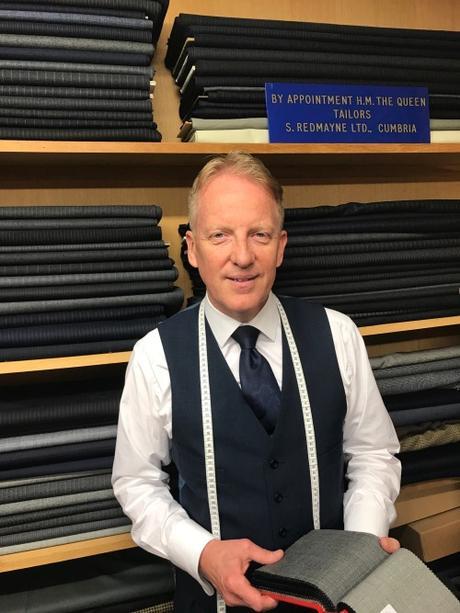
If you’ve been reading about custom tailoring for a while, you’re sure to be familiar with Tom Mahon. The Savile Row trained cutter was one of the first people to write about bespoke tailoring online. Ten years ago, the online landscape for classic men’s style was pretty bare – there were few blogs; no Instagram. Much of what people learned, including me, was through websites such as Will Boehlke’s A Suitable Wardrobe and Tom Mahon’s English Cut.
English Cut was also the name of Tom’s tailoring firm, which he founded in 2001 after having gone independent. As a tailoring house, it was much smaller than its Savile Row counterparts, but Tom had a big reputation. He trained as a striker (apprentice cutter) under the famous Dennis Halberry at Anderson & Sheppard; as an independent cutter, he’s made suits for Prince Charles and Jonathan Ive. The UK’s Border Television also once did a documentary about him, titled “Tailor Made in Cumbria.”
A few years ago, I noticed English Cut was expanding into new markets – opening stores in Boston and London, as well as offering a new made-to-measure program. Things seemed to be going well for Tom, so I was surprised to learn earlier this month that English Cut had gone into administration. And just a couple of weeks ago, Tom revealed he’s no longer at the firm he founded sixteen years ago. Curious, I reached out to him for an interview. Below is our conversation.
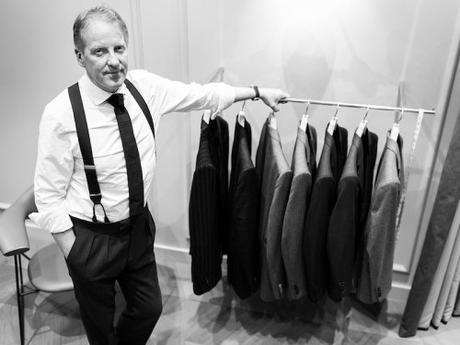
So Tom, what happened?
A number of years ago, I wanted to expand the business. One of the things I’ve always been very conscious of is how few people can afford a bespoke suit. The market for ready-to-wear and made-to-measure, however, often had offerings that were missing key ingredients – things that could have made the suits a lot better from a tailoring point of view. So I thought we could expand English Cut into that sort of offering. Something that drew from my experience as a bespoke tailor, but was offered at a much more affordable price point.
I remember a few years ago, you flew out to India to train some tailors. Was that part of this effort?
That’s exactly it. That project was about me drafting the pattern in the UK, but having the make done in India. The thing is, the Indian project was a great success, but everything was handmade. And with handmade garments, there’s always going to be an issue – even if you order a bespoke garment from me. Suits will vary a little from piece to piece because that’s the nature of the work.
So we were looking for a new model where we could offer something affordable, but with better consistency. There are some factories in China, Eastern Europe, and Italy. However, since I had some clients in Japan, I decided to fly there and meet with one of my contacts. When I arrived, we sat down and discussed my idea for expanding into made-to-measure. And the next day, we were on a bullet train to visit some factories.
The project took a lot of time and effort, but after tweaking the design and construction, we arrived on something we liked. That’s when we did that soft launch with a pre-order model for suits. It was a complete success – we had something affordable, well made, and overseen by me. Clients were really happy.
At that point, we received some offers from investors. And we ended up getting involved with a US partner who agreed to purchase 20% of English Cut. The idea is that we could take that money to push the business forward.

Within the space of two years, however, they never completed the sale, even though we wanted it completed. And that put them in a position of unique power. The revenue coming in from the bespoke side of the business wasn’t enough to sustain the new costs of expansion – having a store in London and Boston, hiring a PR firm, getting new staff, etc. And since they were holding the checkbook, we became beholden to this group, even though they technically weren’t our partners. Instead of being shareholders, they were creditors, and they used that to force us into changes I never really wanted. Over time, I started realizing how these changes were adding up and affecting the company.
You mean they came in initially interested in becoming a 20% shareholder, but then became a creditor?
Yes, exactly. It’s like if I came to you and offered you 100 pounds for 20% of your website. You agree and I say, “great Derek, we’ll get the lawyers to sort it all out. But in the meantime, here’s 50 pounds on loan so you can get the website to look better. Oh, and by the way, there’s 20 pounds in costs for me.”
Then at some point, you have to borrow another 15 pounds because the shareholder sale still has yet to go through. And then another 10 pounds. Before you know it, you’re up to 95 pounds in debt, but I still haven’t purchased any part of your website.
I now turn around and say, “I don’t know if you’re doing things the way I like, and I’ve loaned you 95 pounds. So you’ll have to do things like this, otherwise I’ll force you into administration.”
It’s crazy because English Cut has been going without incident for years until now. And afterwards, we did our research and found this firm has done the same thing with other companies before. It’s all over the internet, unfortunately. We just didn’t know it.
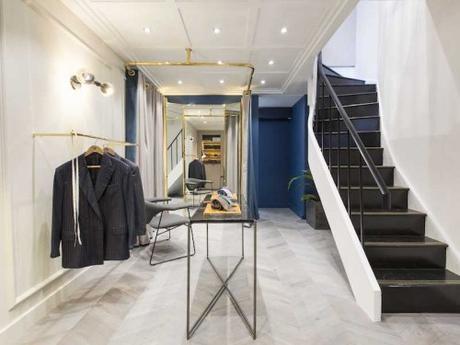

So what happens now that the company is in administration?
Well, administration is different from insolvency. Insolvency is when a company isn’t able to pay its debts, so it collapses and the assets are scooped up and sold.
Administration is different. It’s appointed by a creditor, which in this case is a private equity firm. The creditor says, “this company is actually good, so we’ll continue to trade.” Ultimately, they shut the business down, wipe the slate clean, and pass the ownership to new people. So now the new owner is this private equity firm and I’m gone.
What will happen to current clients with outstanding orders?
I actually saw the writing on the wall about a year ago, so I’ve done my very best to put everything in place so that people would have their work completed by the time I left. There are some people whose orders haven’t yet started. I can’t pretend to be involved at this point – I’m legally not allowed to be there. However, in theory, there should be two sets of clients. Existing clients should be able to get what they paid for. If they can’t, they should be able to ask for a refund. Surely to God, these new owners should look after the clients as it’s in their commercial interest. But again, I’ve only put the pieces in place so they can be settled. In theory, that’s what should happen, but again, I’m not there anymore, so I have no say.
Many tailors face the problem of scalability, where their profits are tied to a very limited number of pieces that can be physically produced within a certain time. However, they’re still seeing their rent and labor costs rise. Is that partly why you went into made-to-measure?
Precisely. If you’re a bespoke tailor and want to earn twice the income, you have to work twice as hard and produce twice the garments. There’s little scalability. And once you have a wife and three kids, as I do, that becomes a problem. Made-to-measure allows you to have some scaling. It’s a perfectly legitimate business, as well. If you do it right, you can offer people something truly special at a more affordable price point. Not everyone can afford bespoke, which amusingly includes me.
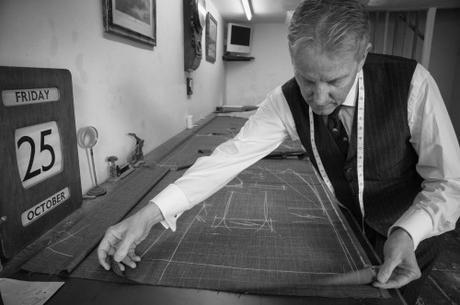
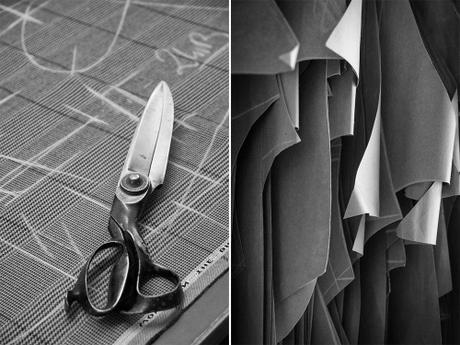
Expanding into made-to-measure requires tremendous capital. It’s almost a different business from building a bespoke tailoring business – one can be a small craft-focused business, while the other requires having a brand. Many Savile Row firms have expanded into ready-to-wear, but they have tremendous capital and history behind them. How does a smaller workshop do that kind of expansion successfully?
It’s true this requires a lot of capital, but it also requires skills and relationships. As you noted, many Savile Row firms are expanding into RTW. And many of the projects are backed with tremendous capital. The difference for me, I think, is that I was trained throughout the tailoring process. In the English system of tailoring, apprentices enter and learn a very specific trade – coat making, trouser making, cutting, etc. I’m first and foremost a cutter, but I’ve been trained at each stage throughout the process, which I think allows me to think a bit more about how a made-to-measure garment should be done from start to finish.
I also have closer relationships with people. When we did this project at English Cut, many people tried the program on the strength that they knew me and trusted my work. They said they were skeptical of made-to-measure, but trusted this product would have integrity because they’ve known me for years. So I think there are advantages to being a big firm, certainly, but also ones for small firms.
What do you say to people who are wary when they see a bespoke tailoring firm expand like this? Where they feel like the company might lose focus on the bespoke side of the business?
Well, I think these are valid concerns. We went through it. Not because of my choice, but because we got involved with a monied powerhouse. If you have certain people involved, there can be decisions made that take focus away from the core of the business.
From my view, however, it can be a perfectly legitimate side-by-side offering. Offering made-to-measure would not only allow customers to buy suits when they can’t afford bespoke, but it would free up some of my time as a cutter and allow me to train more apprentices. If it’s done for the right reasons, managed by the right people, it’s a perfectly fine thing to do. You have to ask, “who owns the business and what makes it tick?” If it’s a private equity firm, it’s one thing that’ll be driving them. If it’s someone dedicated to the craft, it’ll be another thing driving them. If you start seeing tailors leaving the tailoring house, however, clients might want to take notice.
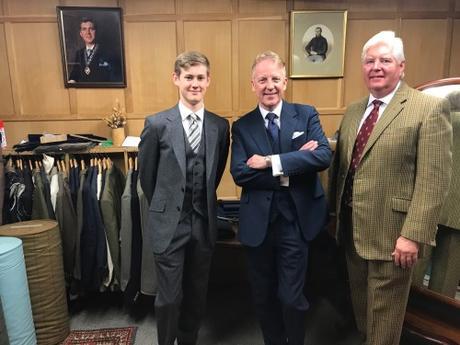
So, what’s next for you?
The good news is that this isn’t a hard luck story; this is a transition story. As you may know, I got my start at S. Redmayne. That’s where I did seven years as an apprentice tailor. It’s also where I studied as a bespoke cutter, both in-house and at college before I moved on to Anderson & Sheppard. And although I moved on, I’ve always had good relations with past employees and colleagues, so this is a great opportunity.
Strangely enough, right when I was talking to this private equity firm, my old boss at Redmanye – Michael – asked if I would be interested in taking over the business. He has two children, both doctors, and he didn’t want to sell it to foreign investors. He asked if I was interested in taking on the business, but I had too much going on at the time.
A year later, when things started going sour, I talked to Michael about some of my problems. He told me I should head Redmanye. It has tremendous heritage – a five-generation old company that started in the 1860s. It’s run continually for 150 years and has always stayed in the Redmayne family, but I’ll be coming aboard as the head cutter and creative director. So I’ll again be part of the company that originally got me into the trade over three decades ago.
Does that mean you’ll continue to travel to the United States? And will your house style be the same?
Yes, it’ll all be the same. I’ll be visiting the same cities I’ve always visited. The current Redmayne cut isn’t the same as my cut, but it will be once I come aboard. I just don’t know how to cut any other way – every cutter has their signature. In the end, it’s kind of a beautiful story. Redmayne is where I got my start as a tailor. I’ve known many of the people there for years, so in some ways, it’s like I’m coming home.
(photos via Paul Stewart, Nashbond, The Rake, and S. Redmayne)
